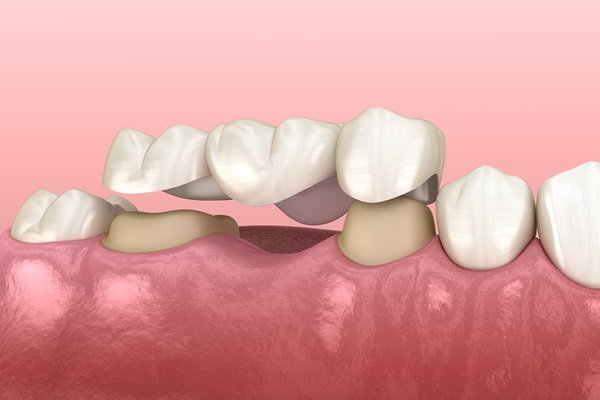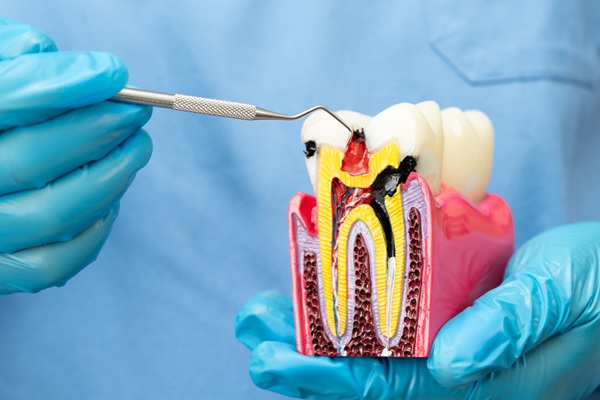Caring for Your Dental Bridge: Tips for Longevity

A traditional dental bridge can replace up to three or four consecutive teeth on the same side of a dental arch. It is one of the most common dental replacements you can get. Knowing how to care for it can help maintain your new smile for a long time. Here are some tips for ensuring a lasting dental bridge.
Benefits of caring for this restoration
Missing teeth can make dental functions challenging. This issue can also cause embarrassment about one’s appearance. A dental bridge needs proper care and maintenance. Sticking to an effective process can help maximize this dental restoration. Below are some known benefits of caring for a dental bridge:
- Reduces the risk of expensive replacements and extensive repairs
- Regular dental checks and daily oral care can ensure a dental bridge’s longevity
- Restores one’s smile and dental functions
- Keeping this dental appliance clean can protect one’s oral health
Changes in habits
Please refrain from using the artificial teeth for anything aside from eating. Avoid chewing on fingernails and pencil heads. Bruxism or teeth grinding can damage a dental bridge. The dentist can order a custom-fit nightguard for the patient if this habit is uncontrolled.
Daily oral care techniques
It is important to brush the dental bridge and natural teeth at least twice daily with a soft-bristled toothbrush. The gentle bristles will not scratch the bridge’s surfaces. Brush in a light, circular motion. Focus on the area around the bridge, dental surfaces, and gumline. Use a fluoride toothpaste to protect the mouth from bacteria. This toothpaste can also strengthen the abutment teeth that support the dental device.
Interdental brushes can clean under the bridges and between teeth. Select the right size to fit under the bridge. Floss threaders can reach the area under the bridge. They enable a back-and-forth movement to remove plaque and food particles.
Water flossers are for individuals who find regular flossing difficult. Pressurized water can clean between teeth and under the dental bridge. Rinse the mouth with an antibacterial mouthwash. Doing so can reduce plaque accumulation and freshen breath.
Diet changes
Despite its strength, a dental bridge can still break with excessive pressure. Avoiding chewy and hard foods is ideal. If eating these foods is unavoidable, make sure to cut them into smaller pieces. Maintain a balanced diet and decrease the intake of sugary foods or drinks.
Regular checkups
These visits must be every six months. They enable the dentist to keep an eye on the condition of the dental bridge. Aside from routine professional dental cleaning, the dentist will also clean the bridge thoroughly. Cleaning will focus underneath the pontics. The goal is to remove plaque, which can help prevent gum disease.
The dentist will also inspect the dental bridge for signs of wear and damage. Assessing how the bridge fits is also crucial to its functionality. Loose fittings will need adjustments. Checking the condition of the abutment teeth is part of each appointment. Treating cavities and reinforcing them with bonding material can make them support the dental bridge much longer.
Taking good care of your dental bridge can prolong your good oral function
Losing some of your teeth can affect your appearance and oral health. It can also lower your self-esteem. A dental bridge can correct this common oral problem. Working with your general dentist can maintain the good condition of your new smile for years.
Request an appointment here: https://www.kevinjdailydds.com or call Kevin J Daily DDS at (831) 580-1141 for an appointment in our Santa Cruz office.
Check out what others are saying about our dental services on Yelp: Dental Bridges in Santa Cruz, CA.
Recent Posts
Dental bridges are an effective and popular way to restore missing teeth, offering cosmetic and functional benefits. When you properly care for and maintain your bridge, it can significantly improve oral health and restore the confidence you have in your smile. However, several factors can influence the longevity of dental bridges.Dental bridges are prosthetic devices…
Choosing a dental bridge as a tooth replacement option is a solution that is going to help improve your overall oral health. When you happen to be missing multiple teeth, the empty spaces in your mouth are going to eventually lead to experiencing additional oral issues. This makes it necessary for you to choose a…
Did you know that you can repair teeth gaps with a dental bridge? The purpose of a dental bridge is to replace missing teeth, which often leads to cosmetic, functional, and oral health concerns. Understanding the pros and cons of dental bridge treatment can help you decide whether it is right for you or if…
If you wanted to know if your dental bridges can be removed, the short answer is no; they are not made to be removable. However, partial dentures, which are very similar to dental bridges, can be removable. Let's take a closer look at understanding A dental bridge cannot be removable because the anchoring system to keep…


